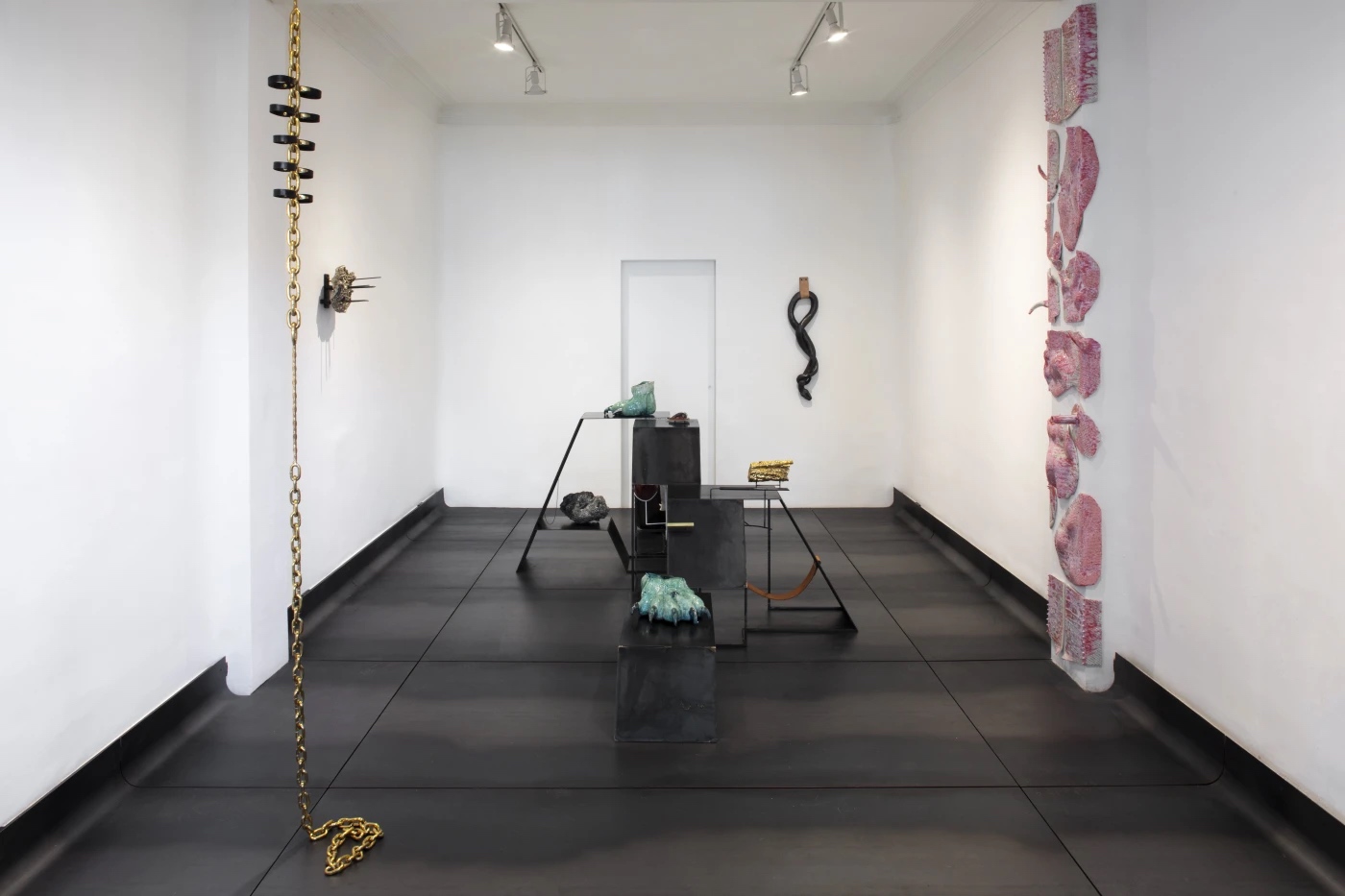
Yeni Mao
Yerba Mala
Guided tour
-> Mar 5 2022
Artist Yeni Mao will give a guided tour of his exhibition Yerba Mala, at Campeche. The tour will be given in English.
Featuring a room-sized installation—comprised of individual ceramics, electro-plated volcanic rocks, and a pyramid-like structure—flanked by mixed media sculptures, the artist responds to cultural elements that surround him in his adopted home city through the lens of his own transnational family history.
Central to the presentation is a pyramidal structure, a five-piece installation looming between sacred structures, architectural modernism, and futuristic aesthetics. Each plinth is made of steel, a material commonly used by Mao for its structural and historical properties—and ultimately a nod to the gallery’s floor—and are articulated with sculptures made of clay, electro-plated volcanic rock, leather, and chains, among other found materials. As a whole, the archipelago-like structure is a living yet fragmented body, pieced together by its different organs and its own internal systems; and references the different subcultures that, brought together, create a whole ethnological entity.
Surrounding the installation is a series of sculptures that explore the relatioship our bodies have with territory, architecture and each other. In to lay in the great city (2022), the artist utilizes a chain—an industrial and hard material—which clashes with the soft, tender vulnerability of leather. Similarly, the many parts that make up blossom (2021) hint to body and flesh, which embraces the architecture of the space it lives in.
Speaking of alchemy as an exploration within his work, Mao shares: “I am dealing with this line between the most primal of materials, and how that primacy can transform itself into an object of significance, an altered condition”.
Autobiographical in nature, many of the symbols within the exhibition stem from Mao’s personal history and heritage. His work speaks about free vs. restrained sexuality—his and culturally speaking—most often represented through materials that attest to queer culture and fetishism, such as leather and studs; and which emanate from the complexity of patriarchal lineage. For example, the snake motif references some of the oral history passed on by his mother, but also appears recurrently in history throughout multiple cultures, whose representation symbolizes sin, rebirth and sex.
Most of the answers that the viewer may have, however, remain unresolved as the artist not only accepts, but actively invites, the viewer to complete a fragmented narrative through their own visceral and lived experiences in an act of recognition.
— Campeche